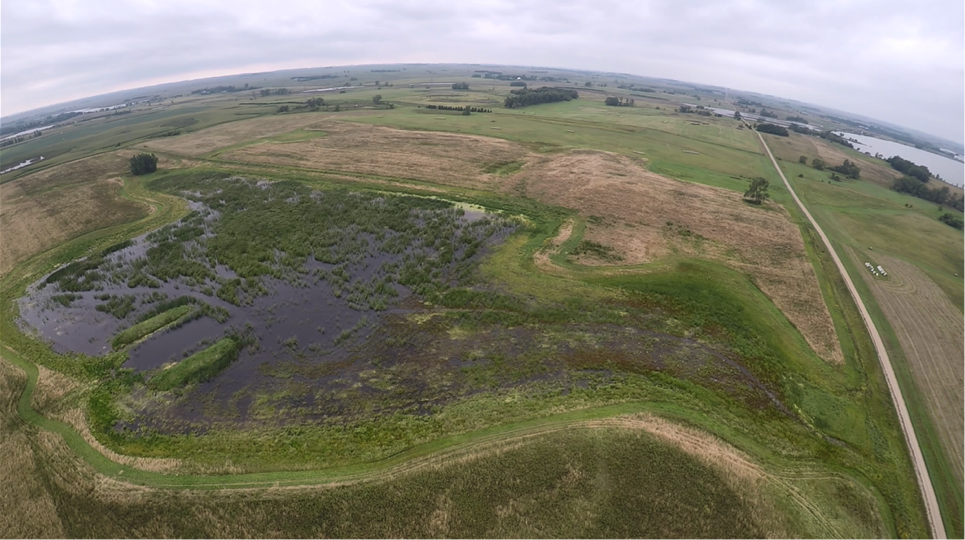Deuel County, South Dakota, is home to some of the most productive breeding waterfowl habitat in the Prairie Pothole Region – reason enough for several partners to work with the Even family to restore 32.5 acres of wetlands on their farm. Add upland nesting bird habitat to the mix, and the project was a winner all around. Through a joint effort involving South Dakota Game, Fish & Parks (SDGFP), USDA Farm Service Agency, USDA Natural Resource Conservation Service (NRCS), and Pheasants Forever, a water control structure was installed on a previously drained wetland benefiting breeding waterfowl and allowing landowners to cost-effectively restore upland nesting bird habitat.
The structure restored a 20-acre semi-permanent marsh improving water quality and preventing soil loss. Further, it allows for future water-level management to maximize wetland productivity for breeding waterfowl. SDGFP’s wetland restoration program made this work possible, and perfectly complemented the Even’s desire to enroll 225 additional acres of high quality, structurally diverse Conservation Reserve Program (CRP) lands to their existing 460 acres of CRP, increasing farm income through CRP land rental payments.
“The wetland restorations helped make the uplands qualify for CRP, and collectively helped the landowners achieve their goal of increasing nesting success and hen survival of upland nesting birds,” stated Eric Magedanz, Pheasants Forever Farm Bill Biologist, who provided technical assistance to the Evens.
Magedanz is one of 12 biologists who are on the ground in South Dakota thanks to a partnership between SDGFP, USDA NRCS, and Pheasants Forever. Biologists work directly with landowners to help them understand their USDA program options and walk them through the process of enrollment. These positions add much needed capacity to work directly with landowners on voluntary, incentive-based farm bill conservation programs like CRP and EQIP, as well as other state and local options. When partners and landowners work together, productive complexes of wetlands and uplands are restored to work for wildlife.
To see if your land may qualify for CRP, contact a USDA Service Center near you, or locate a Farm Bill Biologist at www.pheasantsforever.org/Habitat/findBiologist.aspx.

